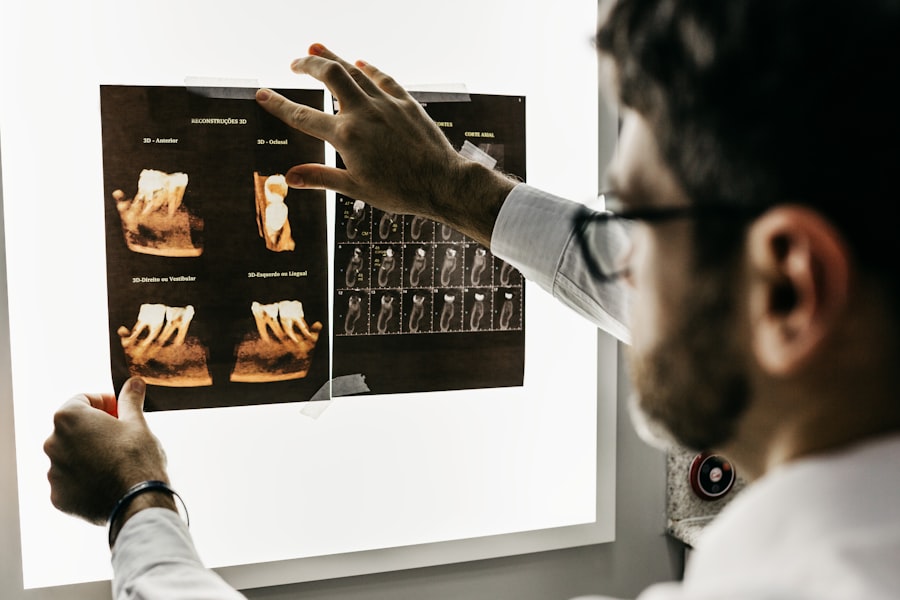Dental implant clinical trials are pivotal in advancing the field of dentistry, particularly in the realm of prosthodontics and oral rehabilitation. These trials serve as a structured method for evaluating the safety, efficacy, and long-term outcomes of dental implants, which have become a cornerstone in restorative dentistry. As the demand for dental implants continues to rise, driven by factors such as an aging population and increased awareness of oral health, clinical trials play a crucial role in ensuring that new technologies and techniques are rigorously tested before they reach the market.
The process of conducting clinical trials in dentistry is multifaceted, involving various stakeholders including researchers, dental professionals, regulatory bodies, and patients. These trials typically follow a systematic approach, beginning with preclinical studies that assess the biological and mechanical properties of implant materials. Once these preliminary studies indicate promise, clinical trials commence, often divided into phases that progressively evaluate the implants in human subjects.
This structured approach not only helps in establishing the safety and effectiveness of dental implants but also contributes to the body of knowledge that informs best practices in clinical settings.
Key Takeaways
- Dental implant clinical trials are essential for evaluating the safety and effectiveness of new implant technologies.
- These trials offer benefits like improved patient outcomes but face limitations such as high costs and lengthy durations.
- Emerging technologies, including digital imaging and biomaterials, are enhancing trial precision and implant success rates.
- Current trends focus on personalized treatment approaches and minimally invasive procedures in implant trials.
- Regulatory frameworks and strict patient selection criteria ensure ethical standards and reliable trial results.
Benefits and Limitations of Dental Implant Clinical Trials
The benefits of dental implant clinical trials are manifold. Firstly, they provide a rigorous framework for assessing new implant designs, materials, and surgical techniques. By adhering to strict protocols, these trials can yield high-quality data that informs clinicians about the expected outcomes and potential complications associated with various implant systems.
For instance, a recent trial comparing titanium and zirconia implants demonstrated significant differences in osseointegration rates, thereby guiding practitioners in selecting the most appropriate material for their patients. Moreover, clinical trials often lead to innovations in implant technology. For example, advancements in surface treatments and coatings have emerged from findings in clinical research, enhancing the integration of implants with bone tissue.
These innovations not only improve patient outcomes but also expand the range of cases that can be successfully treated with implants. Additionally, clinical trials contribute to the establishment of evidence-based guidelines that enhance the overall quality of care in dental practices. However, there are limitations associated with dental implant clinical trials that must be acknowledged.
One significant challenge is the variability in patient populations. Factors such as age, health status, and bone quality can significantly influence implant success rates, making it difficult to generalize findings across diverse groups. Furthermore, the duration of many clinical trials may not adequately capture long-term outcomes, particularly in a field where implant longevity is a critical concern.
For instance, while a trial may show favorable results at one year post-implantation, it may not account for complications that arise several years later. Another limitation is the potential for bias in trial design and execution. The involvement of industry sponsors can sometimes lead to conflicts of interest, where the results may be skewed to favor specific products or technologies.
This underscores the importance of independent research and transparency in reporting trial outcomes to ensure that clinicians can make informed decisions based on unbiased data.
Emerging Technologies in Dental Implant Clinical Trials

The landscape of dental implant clinical trials is continually evolving, driven by emerging technologies that enhance both research methodologies and clinical applications. One notable advancement is the integration of digital technologies such as computer-aided design (CAD) and computer-aided manufacturing (CAM) in the development and testing of dental implants. These technologies allow for precise customization of implants tailored to individual patient anatomies, which can be evaluated through clinical trials to assess their effectiveness compared to traditional methods.
Additionally, 3D printing has revolutionized the way dental implants are produced and tested. This technology enables rapid prototyping of implant designs, allowing researchers to quickly iterate on designs based on trial feedback. For example, a recent study utilized 3D-printed titanium implants to evaluate their mechanical properties and osseointegration capabilities in preclinical models before advancing to human trials.
The ability to produce complex geometries that mimic natural tooth structures can lead to improved functional outcomes for patients. Another emerging technology is the use of biomaterials that promote enhanced healing and integration with bone tissue. Innovations such as bioactive glass and nanostructured coatings are being explored in clinical trials for their potential to improve osseointegration rates and reduce healing times.
These materials can be tested against conventional titanium implants to determine their efficacy in various patient populations.
Current Trends in Dental Implant Clinical Trials
| Trend | Description | Key Metrics | Clinical Trial Focus | Recent Findings |
|---|---|---|---|---|
| Immediate Implant Placement | Placing implants immediately after tooth extraction to reduce treatment time. | Success rate: 92-95% Healing time: 3-4 months |
Osseointegration speed, implant stability | Improved patient satisfaction and reduced bone loss reported. |
| Use of Biomaterials and Coatings | Application of bioactive coatings to enhance osseointegration. | Bone-to-implant contact: 60-75% Reduction in inflammation markers |
Surface modification effects on healing | Enhanced early-stage bone growth and reduced peri-implantitis incidence. |
| Digital Implantology | Utilization of CAD/CAM and 3D printing for implant planning and fabrication. | Accuracy: ±0.5 mm placement deviation Procedure time reduced by 20% |
Precision and patient-specific implant design | Higher accuracy and improved prosthetic fit demonstrated. |
| Mini Dental Implants | Smaller diameter implants for patients with limited bone volume. | Survival rate: 85-90% over 3 years Less invasive surgery |
Long-term stability and load-bearing capacity | Effective for denture stabilization with fewer complications. |
| Immediate Loading Protocols | Loading implants with prosthetics shortly after placement. | Success rate: 90-93% Loading time: within 48 hours |
Impact on osseointegration and implant survival | Comparable outcomes to delayed loading in selected cases. |
Current trends in dental implant clinical trials reflect a growing emphasis on patient-centered outcomes and personalized treatment approaches. Researchers are increasingly focusing on how different factors—such as patient demographics, comorbidities, and lifestyle choices—affect implant success rates. This shift towards personalized medicine is evident in trials that stratify participants based on these variables to better understand how they influence treatment outcomes.
Moreover, there is a notable trend towards multi-center trials that aim to gather data from diverse populations across different geographic locations. This approach enhances the generalizability of findings and allows for a more comprehensive understanding of how various factors impact implant success. For instance, a recent multi-center trial involving participants from urban and rural settings provided insights into how socioeconomic factors influence access to care and treatment outcomes.
Another significant trend is the increasing incorporation of patient-reported outcomes (PROs) into clinical trial designs. Researchers are recognizing the importance of understanding patients’ perspectives on their treatment experiences and satisfaction levels post-implantation. By integrating PROs into trial protocols, researchers can gain valuable insights into how implants affect patients’ quality of life, which is essential for informing clinical practice.
Patient Selection and Inclusion Criteria in Dental Implant Clinical Trials
Patient selection is a critical component of dental implant clinical trials, as it directly influences the validity and applicability of trial results. Inclusion criteria must be carefully defined to ensure that participants represent the target population for which the implant technology is intended. Common criteria include age, overall health status, oral hygiene practices, and specific dental conditions such as periodontal disease or bone density.
For instance, a trial investigating a new type of implant designed for patients with compromised bone density may specifically include individuals who meet certain thresholds for bone quality as determined by radiographic assessments. This targeted approach allows researchers to evaluate the effectiveness of the implant in a population that may otherwise face challenges with traditional implants. Conversely, exclusion criteria are equally important as they help mitigate confounding variables that could skew results.
Patients with uncontrolled systemic diseases such as diabetes or those who smoke heavily may be excluded from trials due to their higher risk for complications. By establishing clear inclusion and exclusion criteria, researchers can enhance the reliability of their findings while ensuring participant safety.
Regulatory Considerations in Dental Implant Clinical Trials

Regulatory considerations play a vital role in the design and execution of dental implant clinical trials. In many countries, including the United States and those within the European Union, regulatory bodies such as the Food and Drug Administration (FDA) and the European Medicines Agency (EMA) set stringent guidelines for conducting clinical research involving medical devices like dental implants. These regulations are designed to protect patient safety while ensuring that new products meet established standards for efficacy.
Before initiating a clinical trial, researchers must submit detailed protocols outlining their study design, objectives, methodology, and statistical analysis plans for regulatory review. This process often involves multiple rounds of feedback and revisions to ensure compliance with ethical standards and scientific rigor. For example, any potential risks associated with the use of new implant materials must be thoroughly assessed and communicated to participants during the informed consent process.
Additionally, post-market surveillance is an essential aspect of regulatory oversight once an implant has received approval for commercial use. Ongoing monitoring of long-term outcomes and adverse events is crucial for maintaining patient safety and ensuring that any emerging issues are promptly addressed. Regulatory bodies may require manufacturers to conduct post-marketing studies to gather additional data on implant performance over time.
Future Directions in Dental Implant Clinical Trials
Looking ahead, several future directions are emerging within dental implant clinical trials that promise to further enhance our understanding of implant technology and its applications. One significant area of focus is the exploration of regenerative medicine techniques aimed at improving bone healing around implants. Research into stem cell therapies and growth factors could lead to breakthroughs that enhance osseointegration rates and reduce healing times.
Furthermore, advancements in artificial intelligence (AI) and machine learning are poised to revolutionize data analysis within clinical trials. These technologies can help identify patterns within large datasets that may not be readily apparent through traditional statistical methods. For instance, AI algorithms could analyze patient demographics alongside treatment outcomes to predict which patients are most likely to benefit from specific types of implants.
Another promising direction involves the integration of telehealth solutions into clinical trial designs. Remote monitoring tools can facilitate follow-up assessments without requiring patients to visit clinics frequently. This approach not only enhances patient convenience but also allows researchers to collect real-time data on patient experiences and outcomes throughout the trial period.
Conclusion and Implications for Dental Implant Clinical Practice
The implications of ongoing research through dental implant clinical trials extend far beyond academic inquiry; they directly influence clinical practice and patient care within dentistry. As new technologies emerge from these trials—whether through innovative materials or advanced surgical techniques—dentists are better equipped to provide effective solutions tailored to individual patient needs. Moreover, as evidence-based guidelines evolve based on robust trial data, practitioners can make informed decisions regarding treatment options while minimizing risks associated with complications or failures.
The continuous feedback loop between research findings and clinical application ensures that dental professionals remain at the forefront of advancements in implantology. In summary, dental implant clinical trials represent a dynamic intersection between research innovation and practical application in dentistry. By addressing current challenges while embracing emerging technologies and methodologies, these trials will continue to shape the future landscape of dental care for years to come.




